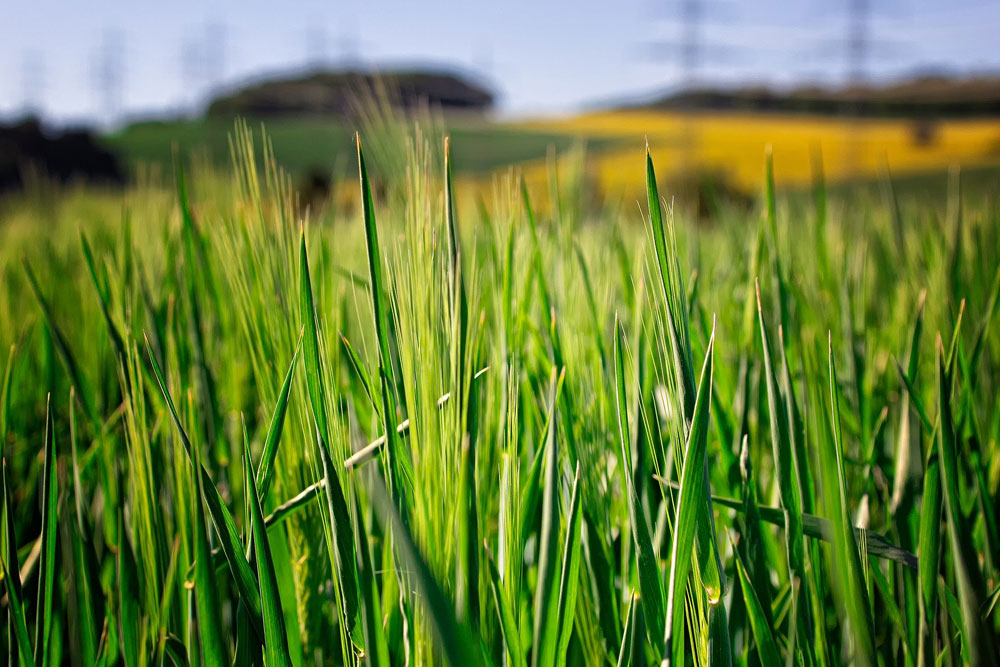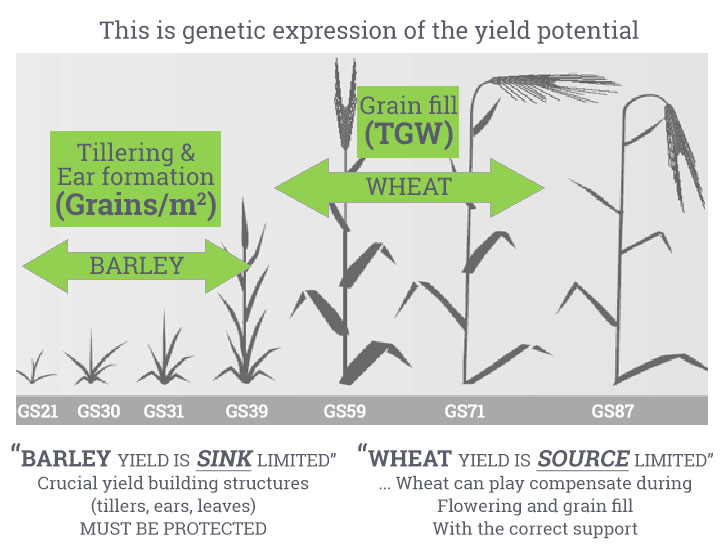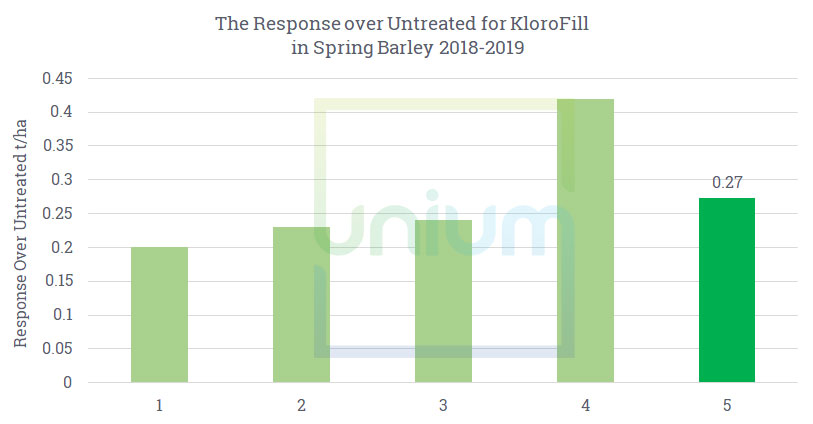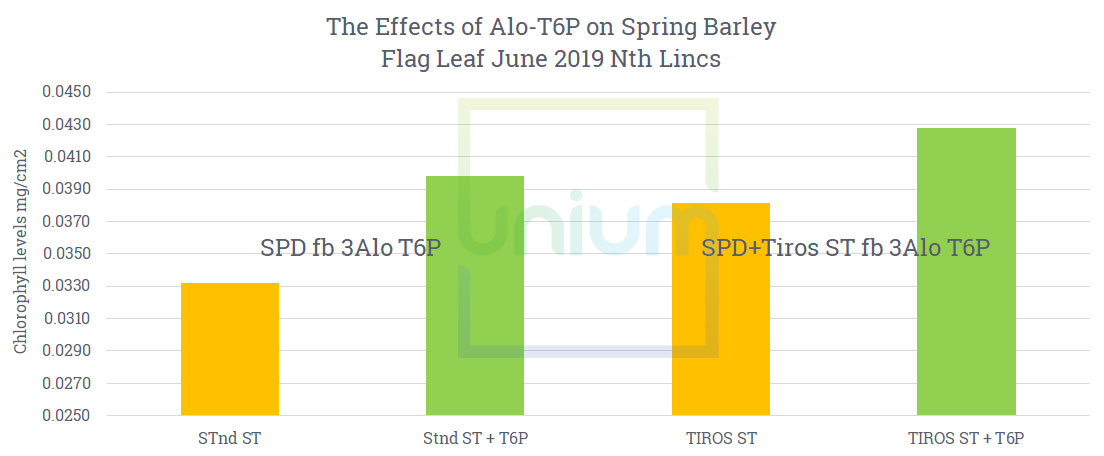Turbo Charge Your Spring Barley Crop

The area of spring barley has rapidly expanded this year, predominantly due to the challenging autumn planting conditions. But spring barley doesn’t have to mean compromise when compared with a winter crop if it’s managed correctly and given the support it needs to fulfil its potential.
Unium are very keen to understand and research nutrient-use efficiency within crops and within varieties of crops. Our work with F1 Seeds is yielding some very interesting data into winter wheat, where the biggest challenge is that the variety may have fallen off the AHDB Recommended List by the time we understand its nutritional efficiencies or indeed inefficiencies…
We all remember Lioness winter oilseed rape, which was a variety that required magnesium applications. Maybe other crops/varieties are sensitive to key nutrients and we are not maximising potential as a result?
Spring barley is no exception. Romer&Schenk 1998 examined 24 different spring barley varieties for their genetic variation in phosphorus uptake and assimilation. They found, as probably expected, a wide range from min to max:
- 30% difference in dry matter yield
- 26% P concentration in the grains
- 24% P assimilation
The grain yield correlated to P uptake r = 0.71 and P assimilation P = 0.6, so high uptake and assimilation is a desirable trait or agronomic input.
Nitrogen is also a key input for spring barley, the early stages of growth have a low demand at around 1.2 Kg N/ha/day, but this jumps to around 3.5 Kg N/ha/day between GS 31-39 and reduces post-GS39 to around 1.5 Kg N/ha/day. In total it will accumulate around 125-150 Kg N/ha.
If we look at the yield generation in spring barley, 30-35% of the grain carbohydrate comes from the flag leaf and stem and 45% from the rest of the plant. So maximising the flag leaf area, chlorophyll content and duration, along with efficient carbohydrate management is essential.
The yield is very closely related to the grain numbers per unit area and so flowering biology must be optimised along with ear number per unit area. Nutrient deficiencies have to be avoided to maximise tiller production and survival early in the crops life to optimise these ear numbers.
The light incidence reaches its maximum in June/July, but the crop will be intercepting around 65-70% of the total by the end of grain filling and 30-35% before the crop is harvested. The biomass accumulation really increases from around 0.05 t/ha/day pre-GS31 to 0.2 t/ha/day after until ear emergence, so providing all the crop requirements in this key window is crucial for optimising yield.
Barley is physiologically “sink” limited crop, which means we must protect the yield contributing components of the plant e.g. tillers, leaves, ears.
Key pointers
- Max P, N and K availability.
- Remove nutrient deficiencies to maximise ear number/m2.
- Support leaf area, chlorophyll content and duration from GS31 onwards.
- Maximise the nutritionally important flowering biology with boron.
- Maximise carbohydrate translocation with manganese and boron sufficiency.
So how can we help with these key steps? Maximise nutrient availability with an application of calcium phosphite between GS13/14 to mid-tillering/GS30. This will increase root biomass, root elongation and root activation (producing more exudates to capture more soil nutrients). This strategy can also incorporate 2oxo/PGA to enhance nitrogen acquisition.
What about timing? This can be either early with your herbicide or later with fungicide and it will give the same response but is dependent upon stress. So if the crop is stressed, apply calcium phosphite early or if the crop is establishing stress-free, then calcium phosphite can be applied later. The application has no effect on grain quality, even though it gives on average a 0.485 t/ha yield increase.
At GS30-31 ensure you have sufficient potassium. This is the perfect timing for Wholly K, which contains 2oxo-PGA to maximise the nitrogen assimilation which is critical at this time as the plant has a three-fold increase in its nitrogen requirement.
If you have applied the 2oxo+PGA within Acalsa (calcium phosphite), there is no problem in applying it again with Wholly K. It works in what’s called a “futile” cycle, so like a Catherine wheel firework it upregulates the carbon:nitrogen metabolic pathway for 20+ days then burns out back to a normal natural background level.
This is also the time to consider manganese and boron in preparation for flowering and carbohydrate relocation. In our trials from last season, a two-spray programme outperformed a single spray programme significantly.
As spring barley moves through its growth stages very quickly, the next consideration is an application of KloroFill. KloroFill is a unique crop enhancement treatment for cereals that improves the efficiency of chlorophyll production and maximises green leaf area during periods of rapid growth. KloroFill contains pentanoate – an organic keto acid-based compound that is a unique biological precursor to chlorophyll synthesis. Pentanoate reverses the chlorophyll suppression that a plant may experience during rapid growth, for example, at flag leaf stage.
By increasing chlorophyll production, KloroFill maximises green leaf area and plant biomass, boosting crop growth and therefore yield.
The average yield increase from our trials is 0.27 t/ha and excludes the average yield across a 10-variety Agrovista trial in 2019 of 0.54 t/ha (which would increase the overall average yield response to 0.405 t/ha).
Maximising the photosynthetic capacity as the crop is coming into flag leaf helps to develop and protect the important production structures. Klorofill has shown to increase the chlorophyll levels by more than 19% over other products e.g. amino acids.
To round off the sequence in the nutritional support package is an application of 3Alo-T6P at first awns visible “paint brush” to maximise carbohydrate relocation and mitigate against any stress. If you are considering this treatment please ensure you have adequate manganese and boron as they are also critical in carbohydrate translocation and can limit the effect of 3Alo-T6P.
The chart below shows the green leaf retention from both TIROS ST and 3Alo T6P helping the barley to reach its potential. The yield difference on this crop was 1.17 t/ha on the TIROS + 3Alo-T6P block over the untreated.
Overall we are accumulating more data and a greater understanding of how we can use nutrition and biostimulants along with biology to optimise production. It is a complex relationship and we need more data as well as a deeper understanding of product sequences as part of a programme.
Nutrition and biostimulantscan only support the crop in setting yield potential. So if they help the crop to set a higher potential then it will need different management than it would have ordinarily. That means in order to support this higher yield potential, any decisions about nutrient/biostimulants products involves anticipating any nutritional links and biochemical relationships, so that physiological consequences for the crop can be anticipated and planned for.
Let’s hope the cold weather shock will move over quickly and “normal” service can be resumed.




